 Facebook
Facebook
 X
X
 Instagram
Instagram
 TikTok
TikTok
 Youtube
Youtube
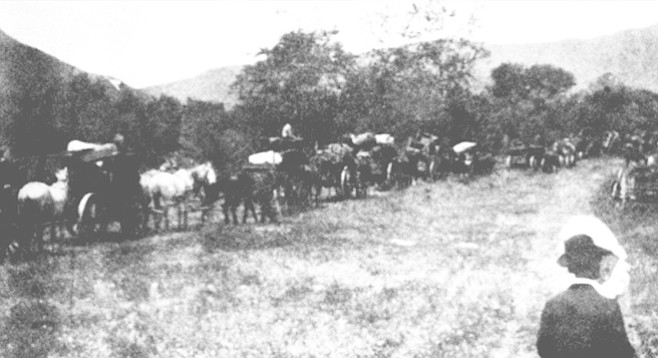
J. Downey Harvey could now legally remove the Indians. There were five settlements: Agua Caliente, Puerta de la Cruz, San José, Puerta Ignoria, and Mataguay; about 215 Indians lived in them, the largest number (128) at the hot springs. Indian improvements to their rancherias, consisting of homes, chapel, school house, and irrigated and cultivated fields and orchards, were worth at least $10,000. But the springs had the potential of becoming a flourishing health spa.
By Richard W. Amero, Sept. 6, 1990 | Read full article
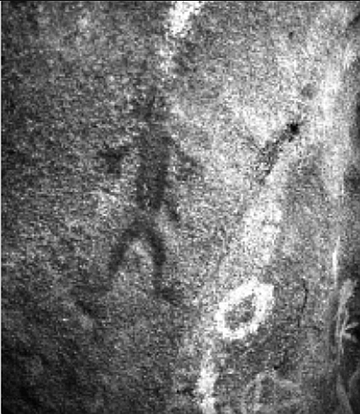
Ancestors of today's Kumeyaay Indians are thought to be originators of the red-, black-, and yellow-painted designs, ranging from expansive sun symbols to abstract designs to cartoony anthropomorphic figures. Some, if not all, are surmised to have been the work of shamans under the influence of hallucinogenic substances. One devil-like figure on a shelter wall was painted in the exact spot where the rising winter-solstice sun casts a spear of light across the figure's beady eyes.
By Jerry Schad, May 8, 2003 | Read full article
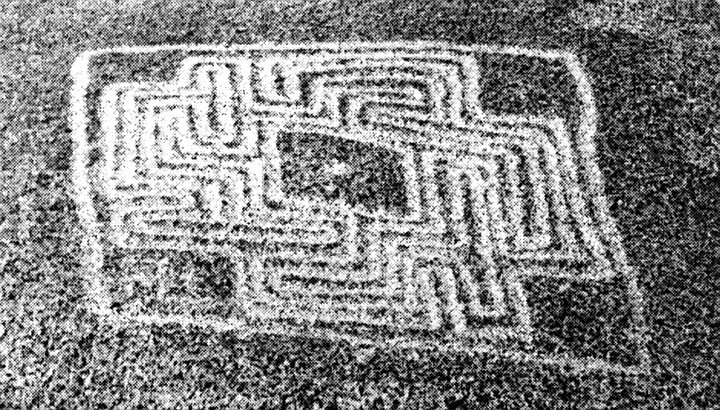
Hedges has identified three styles of rock art in San Diego County: San Luis Rey in North County (zigzags, chevrons, and diamond chain designs); La Rumorosa, from south of El Cajon extending deep into Mexico (which takes many, often representational, forms); and the unique, mazelike Rancho Bernardo style, which runs in an L-shaped corridor from El Cajon to Moreno, then to the desert. But did the latter begin in the desert, then head toward Rancho Bernardo?
By Jeff Smith, Aug. 7, 2003 | Read full article
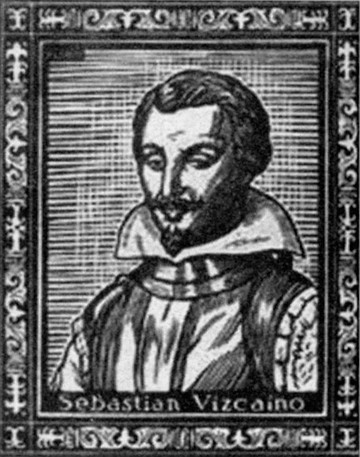
“At least 35 tribes used fire to increase the yield of desired seeds; 33 used fire to drive game; 22 groups used it to stimulate the growth of wild tobacco; while other reasons included making vegetable food available, facilitating the collection of seeds, improving visibility, protection from snakes.” The latter suggests a novel way around an old problem. In many native Californian cultures, killing poisonous snakes was taboo. It could bring great evil on the slayer.
By Jeff Smith, Aug. 23, 2001 | Read full article
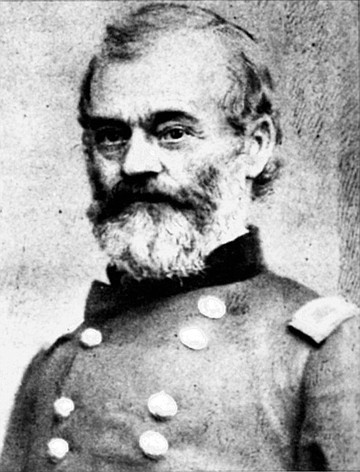
Garra sent couriers to every tribe in San Diego County, including San Pasqual, Santa Isabel, San Luis Rey, and Temecula. At the same time, he also sent runners to tribes in Baja, the Central Valley, and the Colorado River. His message: forget tribal differences; join and subdue the white invaders. He personally visited the “river Indians to the cast”—even the Kamias, who lived on the Colorado Desert and whose chief, Geronimo, became one of Garra’s greatest allies.
By Jeff Smith, June 20, 2002 | Read full article
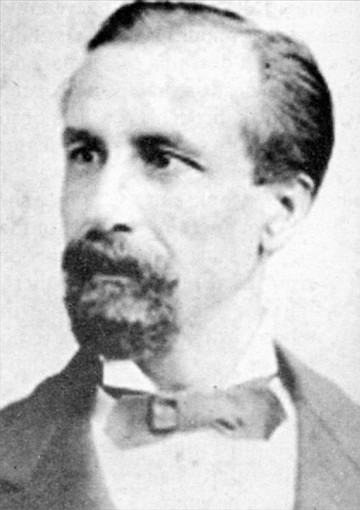
On November 21, Cupeños attacked Americans at Agua Caliente. Led by Garra’s son, Antonio, they found three Americans convalescing at the hot springs: Fiddler, Ridgeley, and Slack. They took the invalids to the burial ground, then stripped and murdered them. Then they went to another house and clubbed and lanced Joe Manning. When they divided his possessions, young Garra and Juan Bautista fought over who should get three large and three small gold pieces.
By Jeff Smith, June 27, 2002 | Read full article
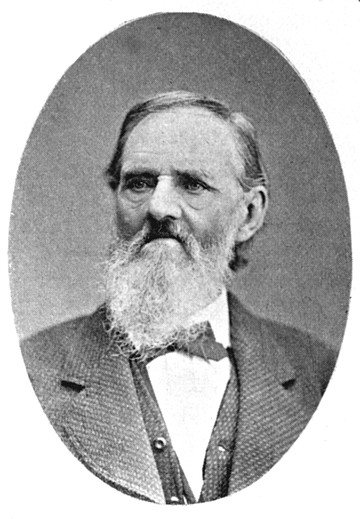
“Once captured, the Cupeño chief realized that all his efforts to unify the Indians of southern California had failed and that his followers, defeated in battle, were anxious for peace. He was aware that even if released his influence among his people would now be tenuous at best.” Garra tried to implicate Californios in the plot, but his swift trial named him “sole author” of the uprising.
By Jeff Smith, July 3, 2002 | Read full article


J. Downey Harvey could now legally remove the Indians. There were five settlements: Agua Caliente, Puerta de la Cruz, San José, Puerta Ignoria, and Mataguay; about 215 Indians lived in them, the largest number (128) at the hot springs. Indian improvements to their rancherias, consisting of homes, chapel, school house, and irrigated and cultivated fields and orchards, were worth at least $10,000. But the springs had the potential of becoming a flourishing health spa.
By Richard W. Amero, Sept. 6, 1990 | Read full article

Ancestors of today's Kumeyaay Indians are thought to be originators of the red-, black-, and yellow-painted designs, ranging from expansive sun symbols to abstract designs to cartoony anthropomorphic figures. Some, if not all, are surmised to have been the work of shamans under the influence of hallucinogenic substances. One devil-like figure on a shelter wall was painted in the exact spot where the rising winter-solstice sun casts a spear of light across the figure's beady eyes.
By Jerry Schad, May 8, 2003 | Read full article

Hedges has identified three styles of rock art in San Diego County: San Luis Rey in North County (zigzags, chevrons, and diamond chain designs); La Rumorosa, from south of El Cajon extending deep into Mexico (which takes many, often representational, forms); and the unique, mazelike Rancho Bernardo style, which runs in an L-shaped corridor from El Cajon to Moreno, then to the desert. But did the latter begin in the desert, then head toward Rancho Bernardo?
By Jeff Smith, Aug. 7, 2003 | Read full article

“At least 35 tribes used fire to increase the yield of desired seeds; 33 used fire to drive game; 22 groups used it to stimulate the growth of wild tobacco; while other reasons included making vegetable food available, facilitating the collection of seeds, improving visibility, protection from snakes.” The latter suggests a novel way around an old problem. In many native Californian cultures, killing poisonous snakes was taboo. It could bring great evil on the slayer.
By Jeff Smith, Aug. 23, 2001 | Read full article

Garra sent couriers to every tribe in San Diego County, including San Pasqual, Santa Isabel, San Luis Rey, and Temecula. At the same time, he also sent runners to tribes in Baja, the Central Valley, and the Colorado River. His message: forget tribal differences; join and subdue the white invaders. He personally visited the “river Indians to the cast”—even the Kamias, who lived on the Colorado Desert and whose chief, Geronimo, became one of Garra’s greatest allies.
By Jeff Smith, June 20, 2002 | Read full article

On November 21, Cupeños attacked Americans at Agua Caliente. Led by Garra’s son, Antonio, they found three Americans convalescing at the hot springs: Fiddler, Ridgeley, and Slack. They took the invalids to the burial ground, then stripped and murdered them. Then they went to another house and clubbed and lanced Joe Manning. When they divided his possessions, young Garra and Juan Bautista fought over who should get three large and three small gold pieces.
By Jeff Smith, June 27, 2002 | Read full article

“Once captured, the Cupeño chief realized that all his efforts to unify the Indians of southern California had failed and that his followers, defeated in battle, were anxious for peace. He was aware that even if released his influence among his people would now be tenuous at best.” Garra tried to implicate Californios in the plot, but his swift trial named him “sole author” of the uprising.
By Jeff Smith, July 3, 2002 | Read full article
Comments